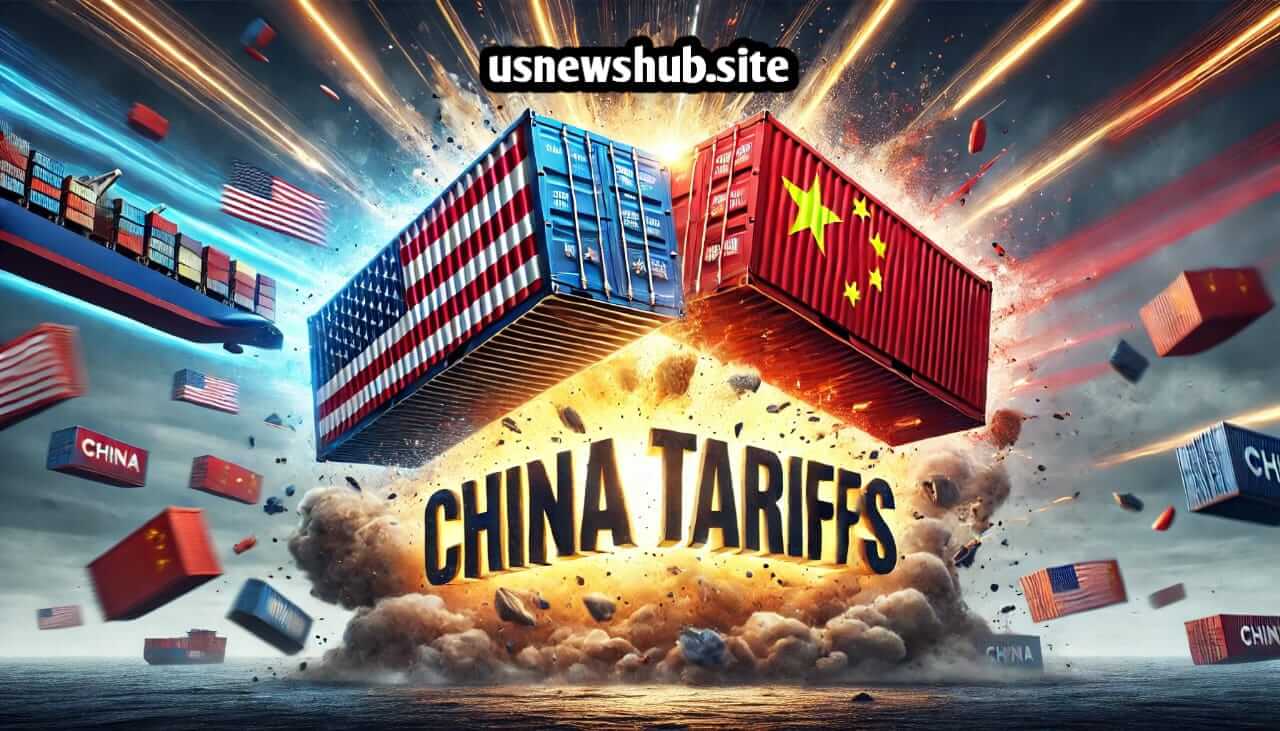China Tariffs: Not Just a News Buzzword
Think about your favorite sneakers, your family’s TV, or even parts of your bike. Chances are, some pieces came from China. For years now, something called “China tariffs” has been a big deal. It’s basically a tax the US government adds to lots of things bought from China. But why should you care? Let’s break it down simply.
Imagine Sarah. She owns a small toy shop. Before 2018, she could buy popular toys from China at a good price. Then, the government under Trump China started adding these extra taxes – the tariffs – on thousands of Chinese goods. Suddenly, the price Sarah paid for those toys jumped way up. She faced a tough choice: charge you more at the register, or make much less money herself. Many small business owners like Sarah felt this squeeze. That’s the real-life effect of China tariffs.
What Are China Tariffs? (It’s Like a Tax!)
Think of a tariff like a special fee. When a company in the US buys something made in China and brings it into the country, the US government says, “You need to pay this extra money.” That extra money is the tariff.
So why do we have them? Back in 2018, the US government (led by Trump China) felt China wasn’t playing fair. They argued China was:
- Copying Ideas: Taking American inventions or secrets without permission.
- Helping Their Companies Too Much: Giving Chinese companies tons of government money, making it super hard for US companies to compete.
- Not Buying Enough US Stuff: Not purchasing enough American-made goods in return.
The US hoped these China tariffs would push China to change and encourage companies to make more things in America. News channels like Fox Business talked about these china trade talks all the time!
The US-China Trade Roller Coaster
The story of these China tariffs has had lots of twists and turns:
- Things Get Heated (2018-2019): The US put tariffs on things like washing machines, steel, and then billions of dollars worth of stuff – phones, furniture, clothes. China got mad and put its own tariffs on American things, especially farm goods like soybeans and pork. US farmers lost important customers.
- A Deal (Sort Of) – January 2020: After many tough china trade talks, both countries signed a US China trade deal (often called the “Phase One” china trade deal). China promised to buy a lot more US stuff (like farm products and energy). The US agreed to lower some tariffs but keep most of them. This was a big china deal moment.
- Did the Deal Work? Studies later showed China didn’t buy all the extra stuff it promised in that china trade deal. Then, the COVID pandemic messed up trade everywhere.
- Where We Are Now: Even though the loud arguments from the Trump China days have quieted, most China tariffs are still here under President Biden. The main problems between the two countries haven’t been fixed. The “Phase One” US China trade deal is done, and talks about a bigger deal (“Phase Two”) seem stuck. China trade talks keep happening, but slowly.
Who Really Pays for China Tariffs? (Hint: It Might Be You!)
You might think, “China pays the tax!” But experts – smart people who study money – all agree: US businesses and shoppers pay most of the cost.
- US Companies: Businesses like Sarah’s toy shop pay the tax when the goods arrive.
- You (The Shopper): To cover that extra cost, companies often raise the prices you pay at the store. Studies show over 90% of the tariff cost landed on Americans. Think higher prices for clothes, electronics, furniture.
- US Factories: Companies using Chinese parts pay more, making it harder to compete.
- US Farmers: China’s taxes on US farm goods hurt them badly. The Phase One china deal helped a little, but not completely.
Fox Business: Covering the Ups and Downs
News outlets like Fox Business have followed this story closely. They’ve shown how small businesses struggle with costs, how farmers look for new buyers, and the debates in Washington about whether the tariffs work. Their reporting shows how tricky the US China trade deal situation is.
What’s Next for China Tariffs?
So, what happens now? It’s a bit uncertain.
- Tariffs Are Staying (For Now): Most China tariffs started since 2018 are still here. They’re part of the trade landscape.
- Different Focus?: The Biden team seems more interested in building factories in the US (for things like computer chips and electric cars) than rushing into a new china trade deal. But they haven’t removed the old tariffs, using them as bargaining power.
- Businesses Want Calm: US companies hate the “will they, won’t they?” around tariffs. It makes planning tough. Business groups want tariffs gone if they hurt US companies.
- Inflation Connection: With prices high recently, some people wonder if dropping some China tariffs could help lower costs for shoppers. It’s a big argument!
Why China Tariffs Matter to YOU
Even if you’re not a business owner or farmer, China tariffs can touch your life:
- Your Money: They help make everyday things more expensive (like your sneakers or laptop).
- Jobs: They can affect jobs in businesses hit by higher costs or by China’s taxes on US goods (like farming).
- The World Economy: The US and China are the world’s two biggest traders. When they fight, it shakes things up everywhere, affecting jobs and prices globally.
- Future Tech: The fight involves important tech like computer chips and AI, shaping who leads tomorrow.
China Tariffs FAQ: Simple Answers
What are tariffs?
They’re like a special tax added when goods are brought into the US from another country (like China). The US company buying the stuff pays this tax.
Why does the US tax Chinese goods?
Main reasons:
- To push China to stop unfair practices (like copying ideas).
- To try and bring factory jobs back to the US.
- Because the US buys way more from China than China buys from the US.
Who pays the China tariff tax?
Mostly US companies and shoppers. The US importer pays the tax. To cover it, they often raise prices for stores or for you.
Did the US-China “Phase One” deal work?
Mixed results. China bought more US goods (like farm products) but didn’t hit the huge targets promised. Big problems weren’t fixed.
Will the China tariffs go away soon?
Probably not yet. Most tariffs are still here. Talks (china trade talks) continue, but a big new china deal isn’t happening right now. The government might remove some to help with high prices.
How do China tariffs affect me?
You likely pay more for many things made in China or using Chinese parts (electronics, clothes, furniture). They also impact jobs and the overall economy.
The Takeaway
The China tariffs story isn’t over. It’s a mix of money, politics, and what you pay at the store. While the super-heated Trump China china trade talks have cooled, the tariffs are still a big deal. Understanding this helps you see why prices might be higher and connects big world events to your everyday life. The search for a fair US China trade deal goes on.



